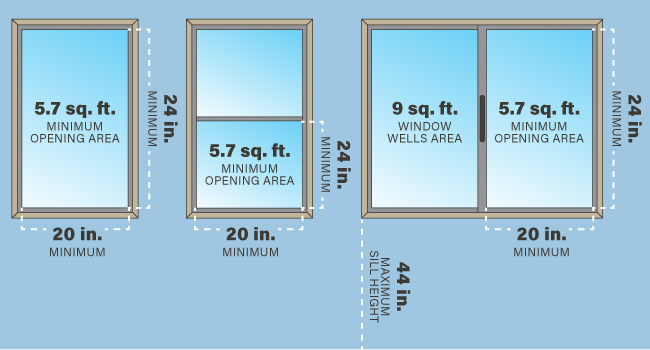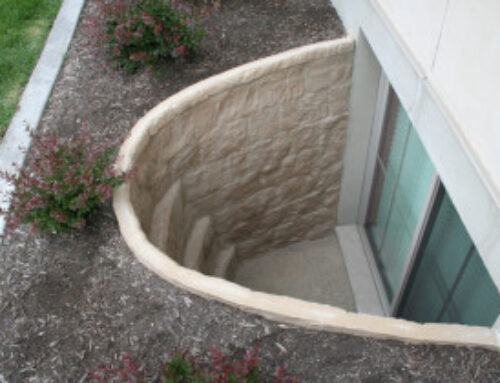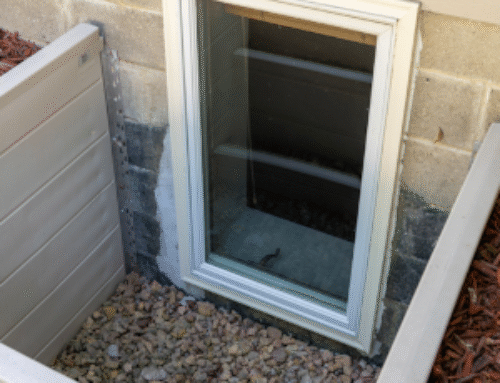Egress windows are more than just an upgrade to your basement—they’re essential for safety, natural light, and code compliance. Whether you’re finishing a basement or upgrading a bedroom, understanding egress windows can make a big difference in how your home functions and meets local regulations.
In this article, we’ll break down what egress windows are, why they matter, and everything you need to know before installing one.
What Are Egress Windows?
Egress windows are more than just openings in a wall—they’re critical components of a home’s safety and functionality. These specially designed windows serve as emergency exits in the event of a fire, gas leak, or other hazardous situation, providing a reliable escape route when every second counts.
To meet the standards of an egress window, the unit must comply with specific size and accessibility guidelines set by building codes. These regulations ensure that the window is large enough for a person to climb out of or for a firefighter in full gear to climb into.
Installing a proper egress window isn’t just a matter of convenience—it’s about protecting lives.
Legal Requirements & Building Codes for Egress Windows

The International Residential Code (IRC) outlines these specific requirements for egress windows:
- Minimum Opening Area: 5.7 square feet (5.0 sq. ft. for ground floor windows)
- Minimum Opening Height: 24 inches
- Minimum Opening Width: 20 inches
- Maximum Sill Height: 44 inches from the floor
- Clearance and Accessibility: Window wells must provide at least 9 sq. ft. of area with a minimum dimension of 36 inches. Local codes may vary, so always check with your city or county building department before installation.
5 Types of Egress Windows
1. Casement Windows
Casement egress windows are side-hinged and open outward using a crank, making them ideal for narrow spaces where maximum opening width is needed. They’re one of the most code-compliant options due to their large, unobstructed opening.
2. Sliding Windows
Sliding egress windows open horizontally along a track, offering a sleek and modern look that fits well in wider basement walls. While they save space, they typically require a wider frame to meet egress code requirements.
3. Double-Hung Windows
Double-hung egress windows feature two sashes that move vertically, allowing for ventilation from the top, bottom, or both. They offer a traditional look but may need to be oversized to meet the minimum egress opening standards.
4. In-Swing and Out-Swing Windows
These windows are hinged to open either inward or outward like a door, offering flexibility in how they function based on room layout. They’re a great choice for custom setups but require careful consideration of surrounding furniture or landscaping.
5. Basement Egress Windows
Basement egress windows are designed for below-grade installation and must be paired with window wells and proper drainage systems. They can come in a variety of styles but must meet strict building codes for emergency escape and rescue.
Advantages of Egress Windows
Improved Safety
Egress windows provide a vital emergency exit, especially in areas like basements where traditional doors may not be accessible during fires, gas leaks, or other emergencies. They also allow emergency responders a safe and direct way to enter the home if needed, potentially saving lives in critical situations.
Natural Light and Ventilation
Egress windows bring much-needed natural light into lower-level rooms that often feel dark or confined, transforming basements into brighter, more inviting living spaces. They also improve air circulation, helping to reduce humidity and prevent mold growth, which can be common in basement environments.
Increased Home Value
Installing egress windows can significantly boost the value of your home by turning previously non-compliant or unusable spaces into legal, livable rooms. Buyers are more likely to invest in a property that includes code-compliant safety features and fully functional basement bedrooms or living areas.
Code Compliance for Finished Basements
Building codes require egress windows in any finished basement that includes a sleeping area or living space. Without them, a room cannot legally be considered a bedroom, which limits how the space can be used and may affect resale or rental opportunities.
Potential Insurance Benefits
Some insurance companies offer discounts or favorable policy terms for homes with properly installed egress windows, recognizing the added safety they provide. Having these safety features in place demonstrates that your home is up to code, helping you avoid penalties and higher premiums.
7 Key Considerations for Buying Egress Windows
1. Dimensions
Egress windows must meet minimum size requirements set by building codes, typically including an opening of at least 5.7 square feet. This ensures there is enough space for an adult to safely exit and for emergency personnel to enter during a rescue.
2. Type
The style of window you choose—casement, sliding, double-hung, etc.—should align with both your functional needs and the layout of your home. Some styles work better in narrow spaces, while others offer a more traditional appearance or easier operation.
3. Price
Egress window prices can vary widely depending on the brand, size, window type, and materials used. Keep in mind that larger or specialty windows, such as those with built-in wells or ladders, often come at a higher cost.
4. Height
According to most building codes, the bottom of an egress window must be no more than 44 inches from the finished floor. This rule ensures that the window is within reach and accessible without the use of tools or furniture.
5. Install
Installation costs depend on factors like excavation, structural modifications, and finishing work, especially for basement installations. It’s highly recommended to hire a professional contractor like Crossroads Foundation Repair to ensure the window meets all local code requirements and is properly sealed against water intrusion.
6. Safety
If your egress window is located in a deep window well (deeper than 44 inches), you are required to install a permanent ladder or steps. This safety measure ensures that anyone using the window can climb out quickly and safely in case of emergency.
7. Brand
Well-known brands such as Dyne, Fakro, and Boman Kemp are trusted for producing durable, code-compliant egress windows. These manufacturers offer a variety of models that meet building standards while also providing energy efficiency and stylish design options.
Average Cost of Egress Window Installation
On average, installing an egress window ranges from $2,500 to $5,500. Costs depend on various factors, including:
Type and Size of Window
Larger windows require more materials, structural adjustments, and labor to install, which increases the price. Custom-designed windows, such as special shapes, energy-efficient models, or premium frame materials, can drive costs even higher.
On average, opting for a larger or customized window can add $500 to $1,500 or more to the base installation cost.
Labor and Materials
Materials such as window wells, drainage systems, and finishing trim can also substantially increase expenses. Skilled labor required for working on more complex projects and use of higher-end materials may add anywhere from $1,000 to $3,000 or more to the final bill, depending on the project complexity and location.
Location in the Home
The installation site plays a big role in determining total costs, especially when dealing with basements. Installing an egress window below ground level often requires extensive excavation, grading, and waterproofing to prevent leaks.
Basement installations typically add $2,000 to $5,000 or more to the project, depending on soil conditions, foundation type, and whether heavy equipment must be brought in for digging.
Egress Window Maintenance Tips
Schedule Regular Cleaning and Inspection
Keep your egress windows clean by regularly removing dirt, leaves, and other debris that may accumulate on the glass or in the window well. During cleaning, inspect the window frame and glass for cracks, warping, or signs of moisture damage that could compromise the window’s functionality or safety.
Ensure Clear and Unobstructed Access
Make sure there are no objects, furniture, or overgrown landscaping blocking the inside or outside of the egress window. In an emergency, quick access is crucial, so maintaining a clear path at all times can help save valuable seconds.
Check Drainage Systems Regularly
Inspect the window well drainage system to ensure water is properly channeled away from your foundation. Clogged or malfunctioning drains can lead to water pooling, which increases the risk of basement leaks or window damage.
Maintain Window Wells
Clear out leaves, dirt, and debris from your window wells to keep them clean and fully functional. Also, check that the ladder (if you have one) is securely attached and in good condition, as it must support someone exiting in an emergency.
Update Seals and Locks
Over time, seals can wear down and locks may become loose, leading to drafts, moisture issues, or reduced security. Inspect and replace damaged weatherstripping or faulty locks to ensure the window stays energy-efficient, watertight, and easy to operate in emergencies.
Frequently Asked Questions
Invest in Safe Exits and Bright Spaces
Egress windows are a smart investment in your home’s safety, comfort, and value. They’re more than a building code requirement—they’re a life-saving feature.
Whether you’re planning a renovation or finishing a basement, trust the experts at Crossroads Foundation Repair for professional, code-compliant egress window installations.
Contact us today to schedule your consultation and make your home safer and brighter.




